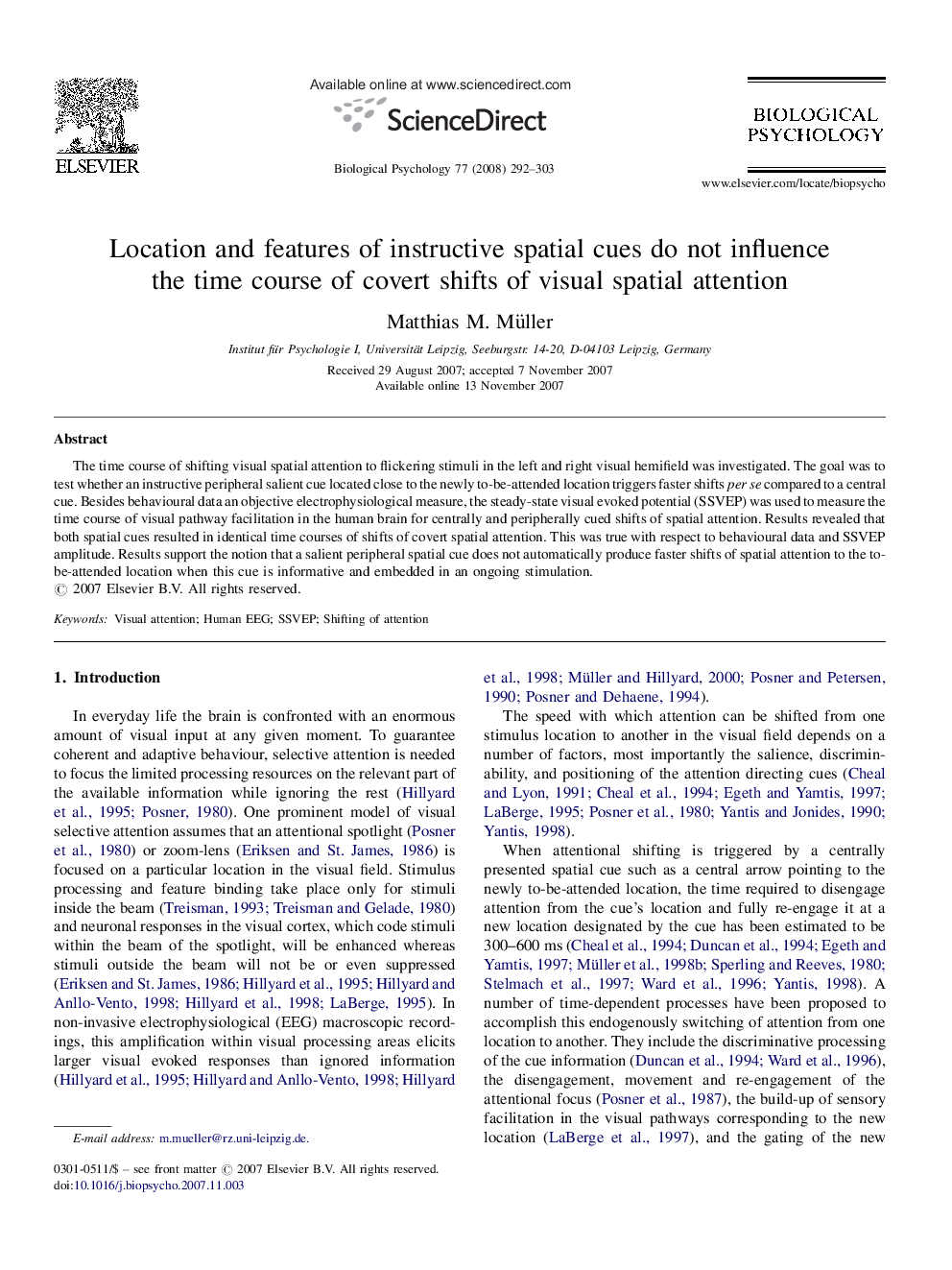| Article ID | Journal | Published Year | Pages | File Type |
|---|---|---|---|---|
| 921591 | Biological Psychology | 2008 | 12 Pages |
The time course of shifting visual spatial attention to flickering stimuli in the left and right visual hemifield was investigated. The goal was to test whether an instructive peripheral salient cue located close to the newly to-be-attended location triggers faster shifts per se compared to a central cue. Besides behavioural data an objective electrophysiological measure, the steady-state visual evoked potential (SSVEP) was used to measure the time course of visual pathway facilitation in the human brain for centrally and peripherally cued shifts of spatial attention. Results revealed that both spatial cues resulted in identical time courses of shifts of covert spatial attention. This was true with respect to behavioural data and SSVEP amplitude. Results support the notion that a salient peripheral spatial cue does not automatically produce faster shifts of spatial attention to the to-be-attended location when this cue is informative and embedded in an ongoing stimulation.
